
Story Time - The Little Hummingbird
Activity 1: Make A Difference
The Little Hummingbird reminds us that every action we take to protect life on this planet matters. What can you do that will make a difference? Whether it’s organizing a community clean-up in your neighborhood, making sure that you recycle, or fixing things that are broken instead of throwing them away, your actions can have a positive impact on the health of our environment. Think about some of the ways that you can take care of your home, or community, and write them down or draw them.
Activity 2: Hummingbird Haiku
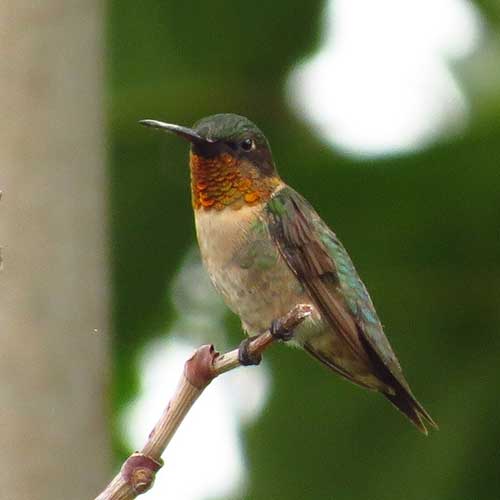
A haiku is a traditional form of Japanese poetry. Haiku are simple-yet-profound three-line poems that don’t need to rhyme. They are usually made up of seventeen syllables in total. A syllable is a part of the word that is pronounced as a unit. For example, the word “haiku” has two syllables, hai and ku. “Hummingbird” has three syllables, and you can clap them out as you say the word: hum—ming—bird.
The first line of a haiku has five syllables, the middle line has seven syllables and the last line has five syllables. You can stick to this structure or use it as an inspirational starting point. Write down and arrange words that remind you of hummingbirds in whatever way you choose.
Here is an example of a traditionally structured haiku about a hummingbird:
Hummingbird hovers
Tiny flash of red and green
Hear, here, hums the Earth
Activity 3: Make Your Own Hummingbird Friend
Want to make your own hummingbird? You can use anything you find around your home to make one. We’ve made one here out of a peanut and a toothpick, using some poster markers and scrap paper.
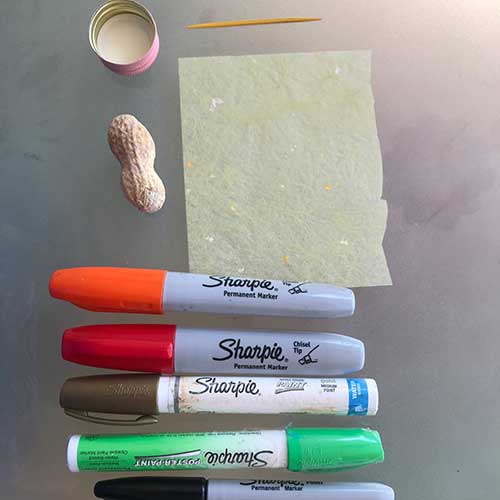
1. Find a flat surface, such as a table, where you can do this project.
2. Select an unshelled peanut for your hummingbird’s body (as long as you aren’t allergic to them!) You could also use small balls of scrunched up paper, some Playdough, or whatever else that you can think of to make your hummingbird.
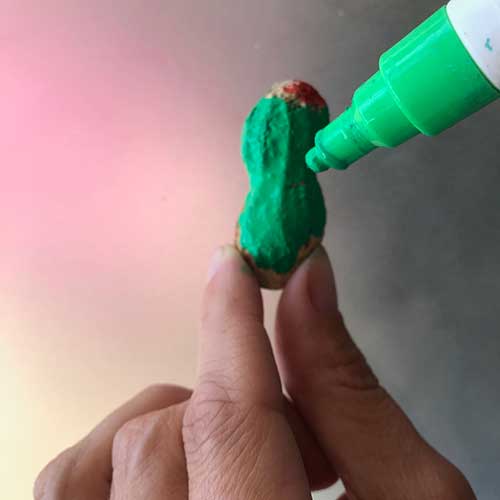
3. Color your hummingbird with markers or paint. We used poster markers in this case and waited for the hummingbird to dry after coloring it.
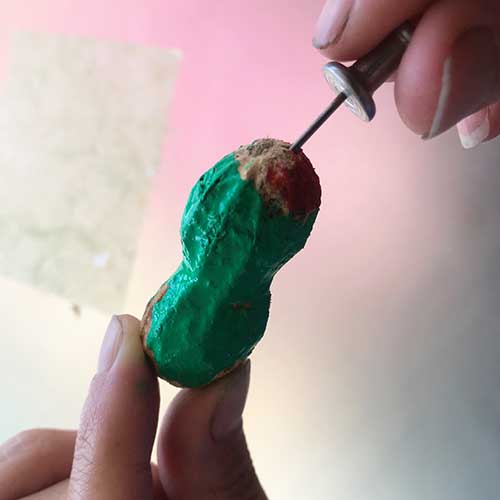
4. Make a hole on one end of the peanut using a push pin. If needed, ask a grown up for help pushing the pin into the peanut. Make sure that your hole is not along the seam of the peanut, or it will split in half.
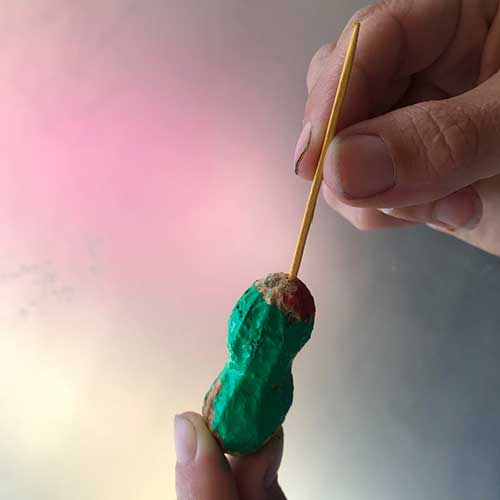
5. Push a toothpick into the pin hole—this is your hummingbird’s beak. Trim to desired size.
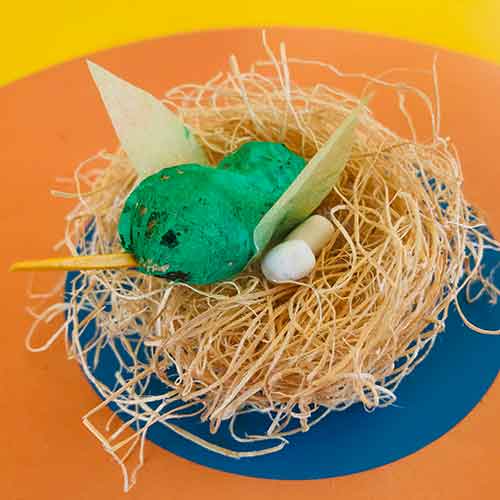
6. Add wings made out of paper, and attach a string, if you want your hummingbird to fly. Alternatively, you could also perch your hummingbird in its own nest. Bottle caps lined with yarn or any basket filler material or crinkled paper can be used as a nest. Tic Tacs make great hummingbird eggs.